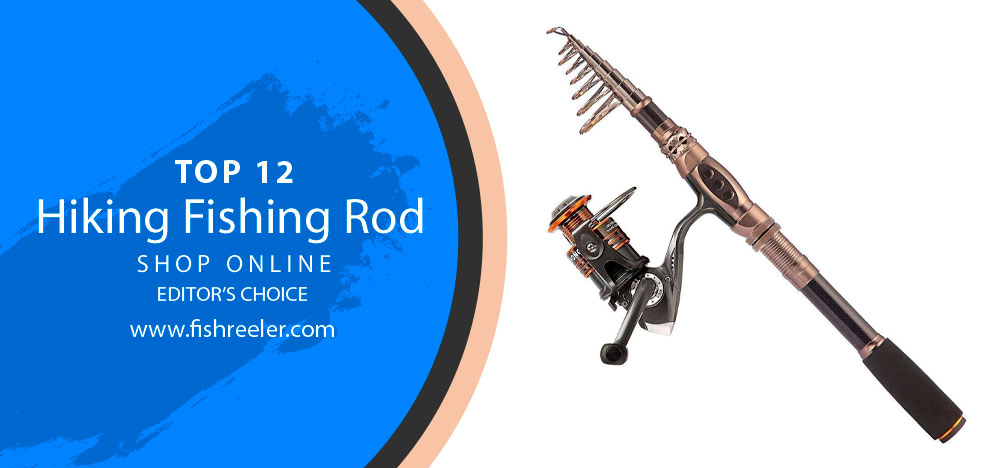
🎣 The Evolution of Adventure: The Hiking Fishing Rod 🏞️
Picture this: You’re on a breathtaking hiking trail, and you stumble upon a pristine, untouched mountain lake. Wouldn’t it be incredible if you could cast a line right then and there? Enter the hiking fishing rod – a game changer for outdoor enthusiasts everywhere!
Why the Hiking Fishing Rod is a Must-Have:
🎒 Compact & Lightweight: Designed for the adventurer on-the-go. No more lugging around heavy equipment!
🤝 Dual-Purpose: Seamlessly fuses the passion for hiking and fishing. A two-in-one wonder!
🐟 Ready-to-Fish: Quick assembly to ensure you never miss that perfect catch.
💪 Rugged Design: Built to endure the demands of both mountain trails and water challenges.
What Sets It Apart?
🌐 Versatility: Perfect for both freshwater and saltwater fishing.
💡 Innovative Features: State-of-the-art tech ensures efficient casts and reeling.
🔶 Don’t let another perfect fishing spot pass you by on your hikes. Elevate your adventures with the hiking fishing rod – your trail companion that understands both terrains and tides. 🚀
🎣 Hiking Fishing Rods: Merging Passions, Amplifying Adventures 🏞️
One such innovation that has caught the eye of many is the hiking fishing rod. This piece of equipment is not just a fleeting trend, but a testament to how modern-day outdoor gear has evolved to meet diverse needs.
A world where you can trek up a serene mountain trail and, upon discovering a secluded lake, swiftly set up your fishing rod without missing a beat. That’s the reality today, thanks to hiking fishing rods.
For many, hiking is a way to disconnect, to be one with nature, and to explore new terrains. But for those who are equally passionate about fishing, there was always a longing—a dream to cast a line in those hidden, untouched waters discovered during hikes.
Traditional fishing gear, with its bulk and specialized design, often made this dream cumbersome. Enter the hiking fishing rod—a fusion of portability and functionality, crafted meticulously to cater to the wanderlust of hikers and the precision of anglers.
🔶 By integrating the features of a robust hiking stick with the capabilities of a full-fledged fishing rod, this innovative tool ensures you no longer have to compromise.
🕰️ Tracing the Line: The Evolution of Fishing Rods 🎣
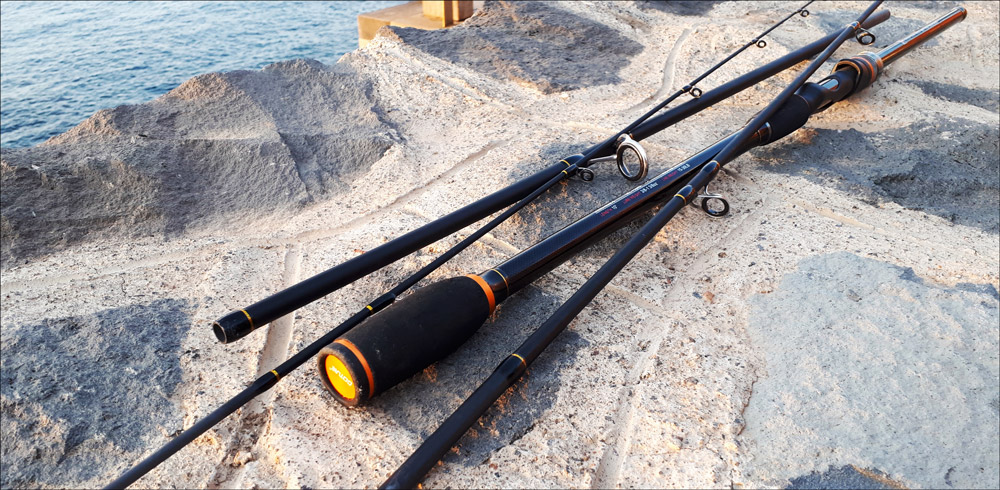
Every innovation has its roots in history, and the hiking fishing rod is no exception. To truly appreciate its genius, it’s vital to understand the journey of fishing rods from their humble beginnings to the portable marvels we see today.
From Bamboo to Breakthroughs: A Glimpse into the Past
Centuries ago, fishing was not just a hobby; it was a means of survival. The earliest fishing rods were simple tools – long sticks, often crafted from bamboo or yew, paired with a line and hook. They were robust, straightforward, and served their purpose. As societies advanced and recreational fishing gained popularity, there emerged a demand for better, more specialized equipment. By the 19th century, the fishing world saw rods made from split cane, enabling more flexibility and precision.
The Modern Twist: Rise of Portability
Fast forward to the 20th century, when the industrial revolution brought about materials like fiberglass and graphite. These were not just lightweight but incredibly strong. As anglers started exploring diverse fishing locations, from deep-sea to high-altitude lakes, the need for compact and travel-friendly rods grew. Manufacturers rose to the challenge, introducing telescopic rods and multi-piece designs that could be easily carried.
Answering the Hiker’s Call: Birth of the Hiking Fishing Rod
While portability was a significant leap forward, there still remained a niche of enthusiasts at the intersection of hiking and fishing. These individuals weren’t just looking for something portable; they needed a rod that could withstand the rigors of hiking trails while being quick to assemble at the sight of an inviting stream or lake. The industry responded by conceptualizing the hiking fishing rod – a tool that was not just compact, but also sturdy, doubling as a hiking stick when needed. It was the perfect solution for those who loved the thrill of the trail as much as the serenity of fishing.
Travel Light, Fish Right: The Best Rod for Mobile Anglers
When it comes to finding the best hiking fishing rod, you want to make sure that you are choosing a quality product that will help you make the most of your fishing experience. In this blog post, we will review some of the top-rated hiking fishing rods on the market and help you figure out which one is right for you. Whether you are a beginner or an experienced fisherman, there is sure to be a hiking fishing rod on our list that fits your needs.
1# Goture Travel Fishing Rod with Case
Looking for a great fishing rod to take on your next trip? Look no further than GOTURE Xceed Travel Fishing Rods! These rods are built with precision and quality in mind, and feature four-piece carbon fiber blanks, stainless steel guides, high-quality ABS reel seats, and EVA split grips. Plus, the hard carry case ensures your rod stays in good condition while you’re on the go. So don’t miss out – order your GOTURE Xceed Travel Fishing Rod today!
Pros
- Carbon fiber blanks for strength and sensitivity
- Stainless steel guides
- High-quality ABS reel seats
- EVA split grips
- Hard carry case included
- Portable
- Durable
Cons
- Lack of color options
- Ferrules could be smoother
2# Fiblink 4 Pieces Travel Spinning Rod
Ready to hit the open water? Make sure you’re packing Fiblink’s 4-Piece Travel Spinning Rod! This lightweight and portable rod is perfect for backpacking trips, and its fast tip allows you to work any bait well when you hook up on a fish. The durable, strong, and lightweight guides with stainless steel frames and ceramic inserts make for a smooth casting experience, while the graphite construction ensures that you’ll feel every nibble. So pack up your Fiblink 4-Piece Travel Spinning Rod and get ready to reel in some big ones!
Pros
- Light-weight with tremendous overall strength
- The fast tip allows you to work any bait well when you hook up on a fish
- Durable, strong, and lightweight guides with stainless steel frames and ceramic inserts
- Enhanced sensitivity of graphite; Powerful, versatile, and flexible
Cons
- Fiblink 4 Pieces Travel Spinning Rod is not good for heavy-duty fishing
3# Okuma VS-605-20 Voyager Spinning Travel Kit
The Okuma VS-605-20 Voyager spinning travel kit is the perfect choice for anglers who want a light-action combo that can tackle trout, panfish, bass, catfish, and walleye. This compact kit includes a 6-foot fishing rod, 20-size spinning reel, small tackle box, and padded travel and storage case. Whether you’re keeping it under your vehicle seat or in your backpack, the Voyager combo is always protected and organized.
Pros
- Compact and lightweight
- Perfect for beginners
- All components are protected and organized
- Tacklebox includes a variety of fishing lures
Cons
- It can be easy to lose small parts
4# EOW Travel Casting/Spinning Fishing Rod
This EOW Travel Casting/Spinning Fishing Rod is perfect for those who love fishing but don’t want to lug around a heavy rod. It’s made with meticulous attention to detail and features high-quality ceramic guides that make casting and reeling in your catch a breeze. Plus, the free case ensures your rod stays safe and protected while you’re on the go.
Introducing EOW’s Travel Fishing Rod – perfect for fishing enthusiasts who love to travel! This high-quality, four-piece rod is made of durable materials and features reinforced reel seats and ferrule gap construction. It’s also lightweight and easy to transport, making it the perfect choice for anglers on the go.
Pros
- Lightweight and easy to carry
- Superior sensitivity for detecting bites
- Smooth actions for casting and retrieving
Cons
- May not be as durable as heavier rods
- Guides may not be as effective in stopping line sticking
5# KastKing Compass Telescopic Fishing Rod
Looking for an easy-to-pack, easy-to-store telescopic fishing rod? Look no further than KastKing Compass Telescopic Fishing Rod. These expertly crafted rods are perfect for active anglers who want the best value in telescopic fishing rods today. Made with a graphite composite blank, each rod is light, sensitive, and durable – perfect for any fishing outing. So don’t wait – get your hands on a KastKing Compass Telescopic Fishing Rod and Combo today!
KastKing is proud to introduce the Compass telescopic rods. These amazing rods are designed with a split rear handle that helps reduce weight and allows for perfect balance. The KastKing Compass Telescopic travel combo is perfect for your next fishing trip. You’ll appreciate the high-quality construction of these rods, including graphite spinning and casting reel seats and stainless steel guides frames with Titanium Oxide ceramic rings. They’re perfect for mono, fluorocarbon, or braided lines. Go ahead and take your next fishing adventure with KastKing’s Compass telescopic rods!
KastKing Compass Telescopic Fishing Rods are a great value for the price. They are well-made, and the construction is very sturdy. The cork handles are comfortable to hold, and the guides are smooth, which makes them easy to cast. The reel seat is also well-made and feels very solid. Overall, I was very impressed with this combo.
Pros
- Graphite composite blank is light and sensitive
- Split rear handle design reduces weight and allows for perfect balance
- Guides frames are stainless steel with Titanium Oxide ceramic rings
- Perfect for mono, fluorocarbon, or braided fishing lines
Cons
- Cork handles are not as comfortable as other materials
- Guides could be smoother
6# KastKing Brutus Spinning Fishing Rod
Looking for a fishing rod that can take a beating? Look no further than KastKing’s Brutus spinning rods. These heavy-duty rods are made with a composite graphite/glass blank that is incredibly durable and able to withstand even the toughest fishing conditions. Plus, each Brutus rod comes with chartreuse “Strike Tip” technology for early strike detection in low light settings. With over 20 different models to choose from, there’s sure to be a Brutus rod perfect for your next fishing adventure!
This tough composite blank rod is available in both spinning and casting models, and in power ratings from ultra-light to heavy. Whether you’re freshwater bass fishing, trout fishing, salmon fishing, or saltwater fishing, there’s a Brutus model perfect for you. And if you need a travel-friendly option, check out the 3 & 4-pc Brutus rods!
These rods are built to deliver reliable performance, with braid-ready stainless-steel running guide frames and corrosion-resistant stainless steel rings. Plus, the tip-top guide is a Zirconium Oxide ring that is perfect for fluorocarbon, monofilament, or braided fishing lines. So don’t settle for an old-school ugly fishing pole – get a Brutus rod and experience the quality and technology that KastKing is known for!
Pros
- KastKing Brutus Spinning Rods are loaded with features and technology
- The tip-top guide is a Zirconium Oxide ring that is perfect for all fishing lines
- Brute Tuff composite graphite/glass blanks make these rods incredibly durable
Cons
- Expensive
7# Sougayilang Telescopic Fishing Rod Portable
The Sougayilang Fishing Rod Telescopic Fishing Rod Portable is perfect for anglers on the go. This telescoping rod collapses down to a very portable size, and its 24-ton carbon fiber and E-Glass construction can handle up to 10 pounds of weight. The guides are made of stainless steel for tangle-free casting, and the CNC machined aluminum reel seat ensures a stable fishing experience.
Sougayilang telescopic fishing rods are perfect for saltwater or freshwater fishing and can cover many species. With corrosion-resistant and power control features, these rods are great for those who love spending time outdoors fishing. The comfortable EVA handle reduces fatigue, making it easier to spend a day out on the water catching your limit.
Pros
- Ultralight and well balanced, less fatigue
- Stainless steel guides with ceramic inserts
- Corrosion-resistant
- Power control
Cons
- Not durable and can break
8# PLUSINNO Fishing Rod and Reel Combos Telescopic Fishing Rod
This PLUSINNO telescopic fishing rod is perfect for anglers of all levels. Our high-density carbon fiber mixed with fiberglass construction makes it durable and hard-hitting, while the stainless steel hooded reel seat prevents corrosion from salt water. The s-curve oscillation system ensures a smooth winding experience, and the bail spring is made of hick-coiled metal for extra strength. With its large spool and line capacity, this fishing pole is ready to tackle any fishing adventure!
Pros
- The s-curve oscillation system ensures a very good line winding
- More short body with large spool and large line capacity
- Deep aluminum spool with double color and one line hole
- Right/left inter-changeable handle
- High tensile strength plastic body
- EVA Fore Grip for comfort
- Hickle coiled bail spring for extra strength
- S-curve oscillation system that ensures a smooth winding experience
Cons
- Not found
9# Daiwa Megaforce Travel Spinning Rod
Looking for a quality travel rod that’s also affordable? Look no further than PLUSINNO Telescopic Fishing Rod! These multi-part rods are made of carbon fiber and can be easily stowed away when not in use. They’re perfect for light fishing trips and come in different lengths and casting weights to suit your needs. So grab a PLUSINNO Telescopic Fishing Rod and get ready to experience some great fishing!
Pros
- Multi-part and high-quality
- Very attractive price range
- Light and thin carbon fiber rods
- Even bending curve
- Comfortable and well balanced in the hand
- Suitable for lighter fishing to heavier pike and zander fishing
Cons
- Can’t be used for heavy fishing
- Not as durable as other professional rods
10# Bass Pro Shops Aventur1 Telescopic Casting Travel Rod
The Bass Pro Aventur1 Telescopic Casting Travel Rod is perfect for business trips, hunting safaris, or backpacking adventures. This durable and lightweight rod is built on a quality RT2 graphite blank and features EVA split grips with X-Wrap and a rubber cork butt cap. Fuji® aluminum oxide guides provide smooth, trouble-free casting. When retracted, it has an overall retracted length of 24-1/2″. Includes a protective cover to keep the guides safe during transport.
Pros
- EVA split grips
- Travel-friendly
- Durable
- Lightweight
- Built on RT2 graphite blank
Cons
- May not be durable for long-term use
- Telescoping sections may loosen over time
11# Profishiency Telescoping Micro Spinning Combo
The Proficiency Telescoping Micro Spinning Combo with Pocket Tackle Box is the perfect setup for your fishing adventures off the beaten path! The 5’L telescoping fishing rod slides down to just 18″, ideal for storage or transport, while a soft EVA handle fights fatigue when you get on the fish! The smooth 2+1 ball-bearing micro spinning reel boasts a 5.2:1 gear ratio and comes pre-spooled with line, so you can hit the water running! Plus, it includes a loaded tackle box complete with mini pliers, lures, and other essential tackle. Get ready to catch some bass with this bad boy!
Pros:
- Perfect for trout fishing in streams, ponds, or rivers
- Skeletonized design is not bulky when collapsed, but it’s full length when extended
- Ultra-strong and durable steel frame construction – won’t break like fiberglass poles
- Ergonomic design
- Retracts to 18″ for storage and transport
- Comes with a fully loaded tackle box that includes mini pliers, lures, and other essential tackle
Cons
- Doesn’t come with a carrying case
12# Bass Pro Shops Power Plus Graphite Telescopic Spinning Rod
Looking for a sensitive and accurate telescopic spinning rod that is also lightweight for ease of use? Look no further than the Bass Pro Graphite Telescopic. This top-of-the-line product is equipped with comfy EVA foam grips and smooth aluminum oxide guides, making it perfect for the professional angler.
The Bass Pro Shops Power Plus Graphite Telescopic Spinning Rod is perfect for those light-angling endeavors. But don’t let the light tackle fool you, this rod is more than capable of handling bass and walleye. The construction process combines graphite with fiberglass, yielding a blank that is both flexible and strong. And at a lightweight design, it’s easy to use all day long.
Pros
- Lightweight design for easy all-day use
- Ideal for light angling, especially for crappie and panfish, but ready to go toe-to-toe with those big bass and walleye, too!
- Probably priced too low, because these rods not only look great, they fish better than many rods costing twice as much 🙂
- Telescopes down to under 2′ for easy transport.
Cons
- None found
🔍 The Anatomy of a Hiking Fishing Rod: A Closer Look 🚀

While it’s fascinating to trace the history of fishing rods, understanding their current design is essential for any angler or hiker looking to invest in the latest gear. Let’s dissect the hiking fishing rod and appreciate the nuances that make it a trailblazer.
Materials & Construction: Strength Meets Lightweight Design 🌿
🟡 Graphite: A popular choice for its combination of strength and featherweight profile. It lends sensitivity, allowing anglers to feel even the slightest nibble.
🟡 Fiberglass: While slightly heavier than graphite, fiberglass offers impressive durability. It’s a go-to for those prioritizing rod longevity.
🟡 Hybrid: Some hiking fishing rods blend graphite and fiberglass to achieve a balance between sensitivity and durability. This dual approach ensures you’re ready for varying fishing situations.
The choice of these materials ensures the rod is equipped not just for angling, but also the physical demands of hiking terrains, from rocky pathways to dense woodlands.
Compactness & Design: Built for the Adventurous Spirit 🎒
🔵 Telescopic Structure: Many hiking fishing rods feature a telescopic design, allowing them to collapse into a compact form, ideal for backpacking.
🔵 Quick Assembly: Engineered with precision, these rods can be set up swiftly. No fumbling or lengthy assembly processes—perfect for when you stumble upon that unexpected fishing spot.
🔵 Ergonomic Grip: Since the rod doubles up as a hiking stick, ergonomically designed handles are paramount. They ensure comfortable grip, reducing hand fatigue during long hikes.
🔵 The core principle is simple: No compromise on the fishing experience, but with the added bonus of portability and hiker-friendly features.
Reel & Line: Precision-Tuned for the Mobile Angler 🌀
🟢 Detachable Reels: Modern hiking fishing rods often come with detachable reels, making it easy to switch according to the fishing environment or species targeted.
🟢 Varied Line Capacities: Given the diverse fishing scenarios a hiker might encounter, these rods are designed to handle different line weights and types.
🟢 Smooth Drag Systems: An efficient drag system is essential, especially when dealing with larger fish in unfamiliar waters. These rods ensure a smooth experience, minimizing line breakage.
By integrating features tailored for the on-the-go angler, the hiking fishing rod ensures that mobility doesn’t come at the expense of functionality.
🔶 In conclusion, the hiking fishing rod isn’t just another piece of equipment; it’s a meticulously crafted ally for those who want to explore without boundaries. Every component, every design choice, echoes the spirit of adventure and the legacy of angling.
🌟 Redefining Angling: The Rise of Hiking Fishing Rods 🌊

The world of angling is vast, intricate, and ever-evolving. With every new innovation, anglers find better ways to connect with nature, explore untouched waters, and perfect their craft. The hiking fishing rod is one such innovation that’s rapidly changing the angling landscape, and here’s why.
Versatility: Embracing Diverse Waters with Ease 🌍
🧿 Mountain Streams: Navigate the narrow, fast-flowing streams with rods tailored for such environments. Their lightweight design and sensitivity allow anglers to feel even the tiniest of bites.
🧿 Lakes & Ponds: Whether it’s a high-altitude lake discovered during a hike or a serene pond in a valley, these rods can handle still waters with grace.
🧿 Coastal Waters: Saltwater fishing demands durability, and modern hiking fishing rods rise to the challenge, offering corrosion resistance without sacrificing portability.
🔶 This versatility means that no matter where your hiking adventures take you, your trusty rod is ready to plunge into any fishing experience.
Economic Benefits: A Smart Investment for the Modern Angler 💰
⚪ Dual-Purpose Design: Instead of purchasing a separate hiking stick and fishing rod, you invest in a 2-in-1 solution. This not only saves money but also reduces the gear you need to carry.
⚪ Adaptable Gear: With the ability to switch out reels and adjust to various line capacities, you’re essentially getting multiple rods in one, eliminating the need for different rods for different fish or waters.
⚪ Longevity: Built for ruggedness, these rods are crafted to last. Their durability ensures fewer replacements over time, providing better value for money.
🔶 Anglers can now enjoy an enhanced experience without burning a hole in their pockets, a testament to thoughtful engineering.
Environmental Consideration: Fishing with a Greener Footprint 🌱
🟤 Less Manufacturing Waste: By adopting a dual-purpose design, there’s a reduced need for producing separate items. This leads to less waste in the production process.
🟤 Fewer Discards: Durability and adaptability mean fewer replacements, resulting in less gear ending up in landfills.
🟤 Eco-friendly Materials: Many hiking fishing rod manufacturers are now prioritizing sustainable materials, further reducing the environmental impact.
🔶 Being eco-conscious is more crucial than ever, and with these rods, anglers can proudly say they’re doing their bit for the planet while indulging in their passion.
📚 Professional Tips for Harnessing the Power of Hiking Fishing Rods 🌟

Venturing into the wild with a hiking fishing rod amplifies your adventure, but knowing how to use it efficiently can make all the difference. Here are some expert-backed insights to help you maximize the potential of your innovative tool.
Site Selection: Scouting the Perfect Spot 📍
- High Vantage Points: Whenever possible, use high grounds or lookout points during your hike to spot potential fishing sites. Clearings and bends in rivers or streams often harbor fish.
- Nature’s Signs: Look out for aquatic insects, as they often indicate a healthy fish population. Birds diving at certain spots might also signal fish presence.
- Accessibility: Ensure the spot you choose is safe and accessible. Avoid areas with slippery rocks or unstable grounds.
Being observant and strategic about site selection can lead to fruitful fishing sessions.
Safety First: Navigating with Care 🛑
- Walking Mode: When using the rod as a hiking stick, ensure the reel is detached to prevent damage and avoid entangling with foliage.
- Point Protection: Use the protective cap or cover provided to shield the rod’s tip. This prevents accidental breakage.
- Awareness: Stay mindful of your surroundings. Casting near overhead trees or cliffs can pose risks. Always ensure there’s ample space behind you before casting.
Your safety, and the safety of those around you, should always be a priority.
Maintenance: Preserving Your Rod’s Integrity 💧
- Post-Use Cleaning: After fishing, especially in saltwater, rinse your rod with fresh water to prevent corrosion and remove grit.
- Regular Inspections: Regularly check for signs of wear, especially at the joints. Address any issues promptly.
- Safe Storage: When not in use, store the rod in a cool, dry place, preferably in its case. Avoid leaving it in direct sunlight for prolonged periods.
Routine care goes a long way in ensuring your rod remains in top condition for years.
Casting Techniques: Mastering the Throw in Challenging Terrains 🎯
- Side Casting: In areas with overhead obstructions, adopt a side cast. It keeps the line horizontal and minimizes the chances of getting caught.
- Roll Casting: Useful for tight spots with limited backspace. This technique involves rolling the line on the water’s surface before the forward cast.
- Adaptive Stance: On uneven terrains, maintain a low center of gravity. Widen your stance for stability during casting, especially on slippery surfaces.
🔶 Every environment presents its challenges, but with the right technique, you can adapt seamlessly.
🎒 Gear Up Right: Top Recommendations for Hiking Anglers 🐟
A hiking fishing rod is a groundbreaking tool, but pairing it with the right gear can elevate your outdoor experience to new heights. From efficient carrying solutions to must-have accessories, let’s dive into the essentials that every hiking angler should consider.
Suitable Backpacks for Your Rod: Carrying with Convenience 🎣
| Backpack Type | Description & Benefits |
|---|---|
| Rod Holder Backpacks | Specifically designed with integrated rod holders to ensure that your rod remains secure during your hiking adventures. |
| Modular Packs | These backpacks feature multiple attachment points, allowing anglers the flexibility to customize by attaching rod tubes or other rod holders as needed. |
| Waterproof Backpacks | Ideal for anglers due to their proximity to water bodies. These backpacks are either waterproof or water-resistant, protecting other gear from potential moisture. |
| Ergonomic Design | Prioritize backpacks that feature padded shoulder straps and lumbar support, enhancing comfort during long hikes and reducing the strain on the back. |
The right backpack can streamline your journey, ensuring ease of movement and quick access to your fishing rod.
Essential Accessories for the Trailblazing Angler 🌲
| Accessory | Description & Benefits |
|---|---|
| Portable Tackle Box | Compact and lightweight, it fits seamlessly into your backpack. It keeps lures, hooks, and other essentials neatly organized. |
| Foldable Landing Net | Collapsible design makes it easy to carry. It becomes invaluable for securing big catches in unfamiliar terrains. |
| Multi-tool | A specialized tool for anglers, this multi-purpose device can cut lines, remove hooks, and perform minor gear repairs. |
| Protective Rod Case | Designed for the hiking angler, this case offers cushioning with a robust exterior to shield your rod during intense hikes. |
| Clip-on LED Light | Ideal for early dawn or dusk fishing sessions. It can be conveniently clipped to hats or backpacks, providing illumination when you need it. |
| Eco-friendly Bait | Emphasizing sustainability, these baits are biodegradable. If lost, they dissolve naturally, reducing the environmental footprint of your fishing expedition. |
Equipping yourself with these accessories ensures you’re prepared for a myriad of situations and can tackle challenges with confidence.
🎣 Real-Life Tales: Anglers & Their Hiking Fishing Rod Adventures 🌄
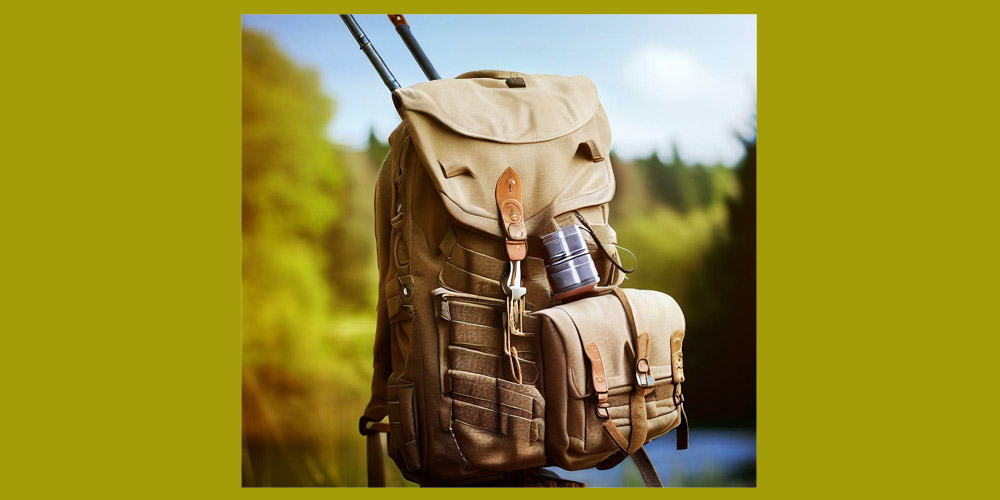
Hiking fishing rods are not just tools; they’re the centerpiece of countless memorable stories. Here are some testimonials from both professionals and passionate enthusiasts that showcase the transformative power of these rods.
Jack, The Mountain Trekker 🏔️
“I’ve always been an avid hiker, and I took up fishing as a way to further connect with nature. My hiking fishing rod has been a game-changer. On a recent trip to the Rockies, not only did I catch a stunning brook trout, but the rod’s compactness meant I could scale heights without hindrance. The rod made the catch, and the memory, possible.”
Amelia, Coastal Explorer 🌊
“Fishing off the coast of Maine has been a tradition in my family. With the hiking fishing rod, I’ve been able to explore remote cliff spots that were previously inaccessible. Last summer, I landed a massive striped bass from a secluded spot, all thanks to the portability and strength of my hiking rod.”
Raj, Professional Angler & Guide 🗺️
“In my profession, I’ve used countless rods, but the hiking fishing rod stands out. Guiding a group through the Amazon rainforest, I was able to teach, hike, and fish seamlessly. One evening, using this rod, we managed to catch a vibrant peacock bass. It wasn’t just about the fish; it was the entire immersive experience the rod facilitated.”
Clara, Weekend Wanderer 🌳
“I’m neither a pro nor a hardcore hiker, just someone who enjoys occasional weekend getaways. My hiking fishing rod has made those weekends magical. I recall a serene morning by a Midwestern lake where I caught my first largemouth bass. The rod was easy to set up, use, and pack away, making my adventure stress-free.”.
🎣 Wrapping Up: The Evolution in Your Hands 🌟
The realm of angling has witnessed myriad advancements over the years, but the hiking fishing rod stands tall as one of the most transformative. It’s not just about merging the art of fishing with the passion for hiking; it’s about redefining how we interact with the great outdoors.
🔍 Key Takeaways:
🔷 Compactness & Portability: The convenience of having a lightweight rod that doesn’t compromise on strength is unparalleled.
🔷 Versatility: Whether you’re by a mountain stream, a coastal cliff, or a serene lake, these rods adapt, ensuring you don’t miss out on any potential catches.
🔷 Sustainability: Less gear means less waste, emphasizing an eco-friendly approach to fishing.
So, where does this leave us? With an invitation. An invitation to embrace a revolution in fishing, to redefine experiences, and to craft memories that last a lifetime.
🌟 Your Next Step: Why wait? Dive into this evolution. Explore the vast range of hiking fishing rods and find the one that resonates with your adventurous spirit. Remember, every great fishing story starts with a cast.
❓🎣 Frequently Asked Questions (FAQs) About Hiking Fishing Rods 🤔
Navigating the world of hiking fishing rods can raise questions. We’ve compiled and answered the most common queries to help guide your journey into this innovative angling evolution.
Tags: #plusinno telescopic, #shimano telescopic, #kastking blackhawk ii telescopic, #sougayilang telescopic, #shakespeare telescopic, #magreel telescopic, #goture telescopic, #daiwa telescopic

I live in Tenerife (Canary Islands) for the last 10+ years and share my daily fishing experiences on my website. Many years of personal experience as a fisherman and the vast experience of my friends allow me to write professionally on any fishing topics (from choosing a flashlight and equipment to deep-sea fishing).
All of my advice is based on practical real-world experience and will be useful to both novice anglers and professionals. Read more about the author.
Affiliate Disclosure: FishReeler.org sometimes gets paid for listings, through sponsors or affiliate programs like Amazon, Ebay, Cabelas, Bass Pro Shop, Shimano, Daiwa, Rapala, Renn, Okuma, KastKing, etс. Clicking a link helps keep FishReeler.org free, at no extra cost to you!
About the author: Each article is verified by the fishing expert Sergio Smirnoff. The articles are written by professional and amateur fishermen with 20+ years of fishing experience.
Note: The views and opinions expressed in this article are those of the authors and do not necessarily reflect the official policy or position of any agency. The articles are for informational purposes only, share your opinions in the comments and join the fishing discussions, let's share our fishing experiences together!


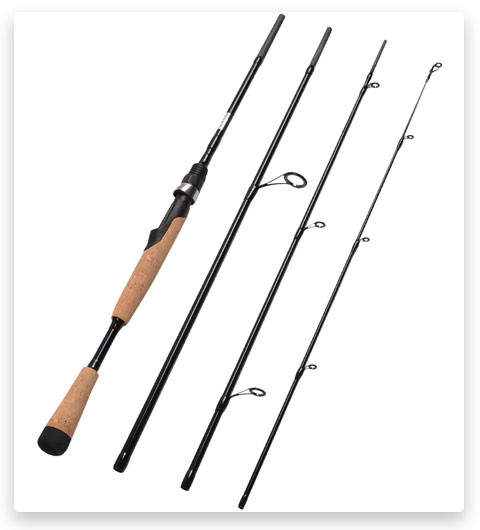
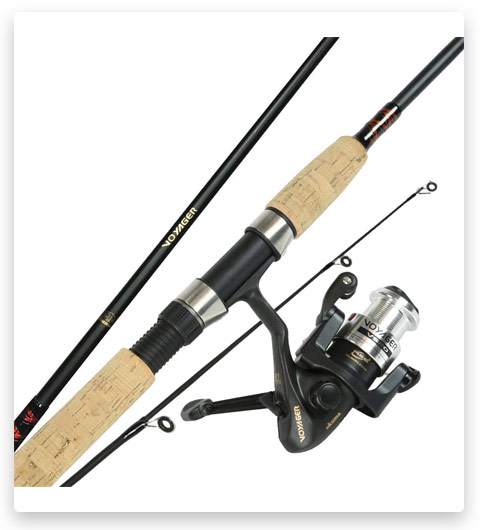

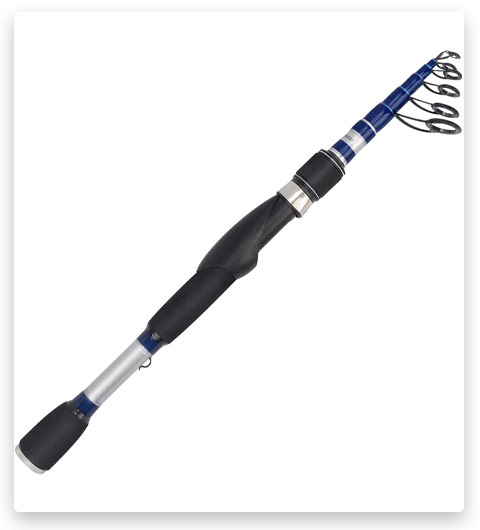
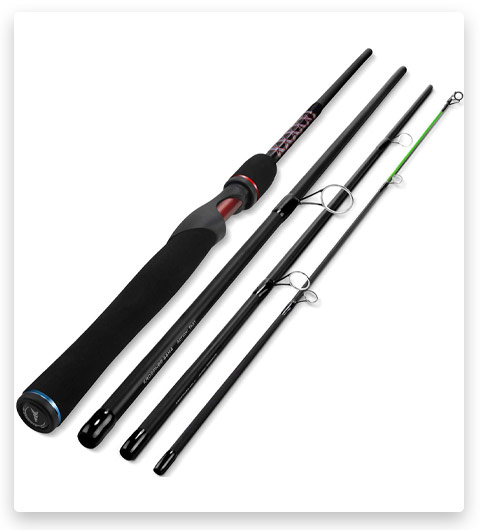


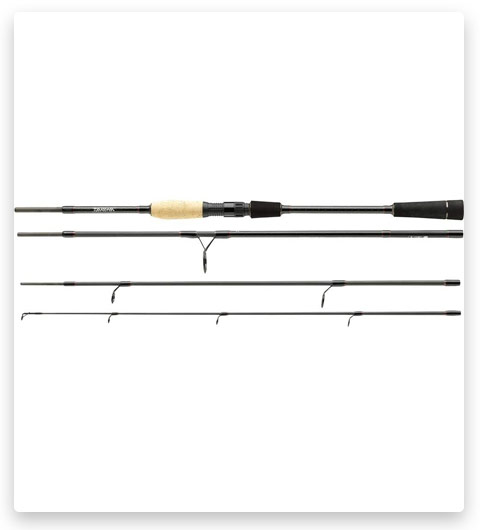

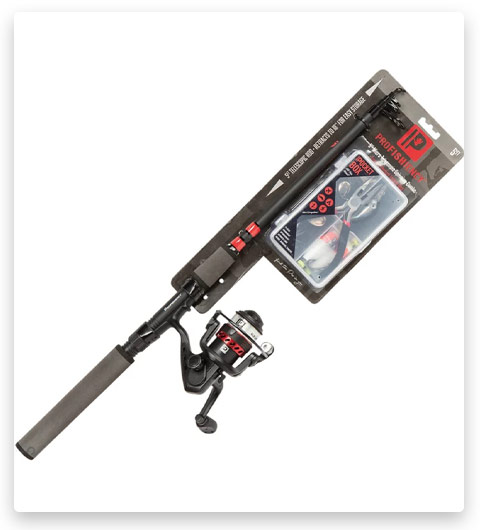
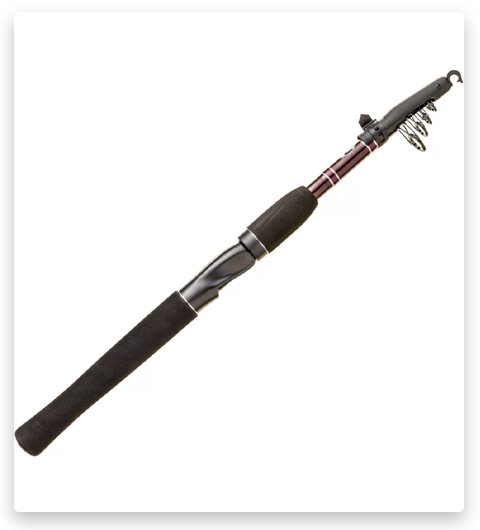
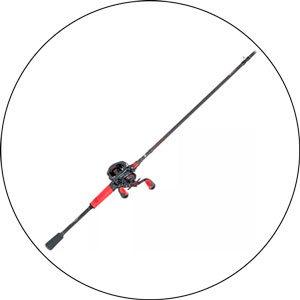
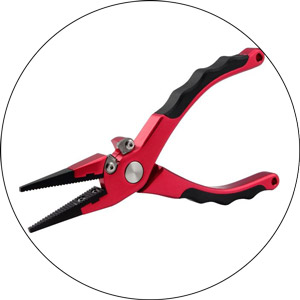
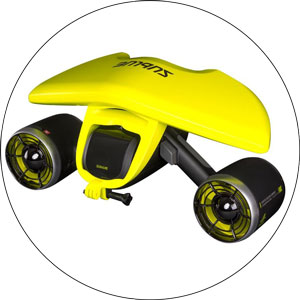
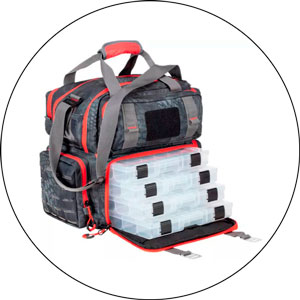

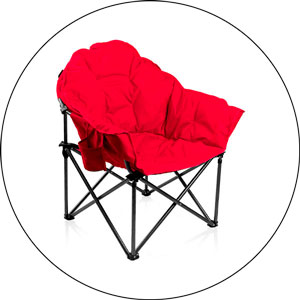
As someone who loves fishing, I recently purchased an inexpensive Okuma travel rod that has exceeded my expectations. It’s the perfect setup for the fish I typically go after and I prefer it over the telescoping style. I did replace the reel with a lighter one, so I can’t really speak to the original reel’s quality.
While I don’t mind using budget gear, if you’re looking to treat yourself to something more luxurious, I highly recommend the St. Croix travel ultralight. I actually gifted one to my dad for trout fishing and was thoroughly impressed with its quality. It even comes with a soft fabric case, but I would suggest investing in a hard case or tube for backpacking purposes.
Overall, I’ve had a great experience with my Okuma travel rod and would definitely recommend it to other budget-conscious anglers. However, if you’re willing to splurge, the St. Croix option is definitely worth considering for its exceptional quality.
I have been using the Fenwick Methods rod as my go-to travel setup. This 3-piece rod comes with two additional pieces, allowing you to switch between medium to medium-light or medium to medium-heavy setups depending on the model you purchase. It’s perfect for inshore fishing and bass fishing.
For those looking to keep the total cost under $200, I recommend pairing the Fenwick Methods rod with a President X30 reel. It’s a great combination that won’t break the bank. However, I have found that my Penn Battle 2 reel is quite heavy for traveling. While it’s a fantastic reel, my hands tire easily after an hour or so of use.
As a result, I recently decided to replace my Penn Battle 2 with two Shimano Nasci reels. They are much lighter and more comfortable to use, making them a great option for extended fishing trips. Despite this change, I am still keeping my Penn reel as it is an excellent choice for certain fishing scenarios.
As someone who has been fishing for decades, I remember having an Eagle Claw Trailmaster model back in the 70s that was a real game-changer. It had a reversible butt that allowed me to switch between a spinning reel and a fly reel, which was really convenient. It was made of glass construction and was my go-to travel rod for a long time.
Recently, I stumbled upon the Eagle Claw Trailmaster Light Spin and Fly Rod, which is the closest thing I’ve seen to my old favorite. This 4-piece rod is made of graphite and measures 7 feet 6 inches in length. It looks like a really nice rod and I’m excited to give it a try.
Overall, I’m thrilled to see that the innovative design of the reversible butt is still being used in modern travel rods. I’m looking forward to testing out the Eagle Claw Trailmaster Light Spin and Fly Rod on my next fishing trip and seeing how it compares to my old faithful from the 70s.
I actually own the Eagle Claw Trail Master that the previous commenter mentioned, and I have to say, I really like it! I’ve only used it with a light spin reel, but it feels great in my hands. While I haven’t used it for fly fishing yet, I imagine it would work well for that purpose, too. Although, I have a dedicated fly rod for that.
That being said, I do want to offer a word of caution about the rod’s strength. While it’s fairly strong overall, it’s important not to overestimate its capabilities. I learned this the hard way when I snagged on a log and gave the rod a good tug with one hand about halfway up the length. Unfortunately, one of the top pieces snapped as a result.
Upon inspection, I discovered that the rod is made of hollow graphite with thinner walls than I expected. It seems that they may have sacrificed a bit of strength for the sake of weight. As an ultralight backpacker, I can appreciate that decision, but it’s still something to keep in mind when using the rod.
Overall, I think the Eagle Claw Trail Master is a great rod that offers a lot of utility for the price. At $70 CDN, it’s a bit expensive, but I’m still considering buying another one because of how useful it is. Just be sure to handle it with care and not put too much strain on it!
I own the Eagle Claw Trailmaster in the spinning/fly combo, and while it’s a bit noodle, I love the versatility it offers. It’s great for big panfish and trout with a handful of wooly buggers, but I also use it as a spinning rod for bass and other species.
It packs down really well, making it the perfect addition to my backpacking gear. I always bring along a small kit with a few Mepps, CD-3 Rapalas, and some wet flies to use with it.
However, I do want to offer a word of caution based on my own experience. I accidentally broke mine on the second-rod piece when I tugged too hard while trying to free a snag. The rod is quite whippy, so it’s important to take care not to apply too much pressure in those situations.
Despite the mishap, I still want to get another one because the utility of having both fly and spinning in one rod is just too good to pass up. In the end, it was my own fault for not being more careful.
As an avid hiker and camper, I’m on the lookout for a new ultralight and compact fishing rod and reel setup for my upcoming trips to the White Mountains, Adirondacks, Sierra National Forest, and Yellowstone. I’m open to suggestions for both spinning and casting rods as long as they are of high quality, packable, and lightweight.
Ideally, I’d like a premium rod that offers nice tip action for jerk and crank baiting but won’t add too much weight to my pack. I mostly use artificial lures, although I will use natural bait in certain situations. I fish for a variety of species, including pike, trout, bass, catfish, bluegill, and crappie in clear waters. I’m willing to invest in a top-of-the-line setup that casts and retrieves smoothly and won’t fall apart easily.
If you have any recommendations for a fishing line or other tackle to match the rod and reel, I’m all ears. Cost is not an issue – I’m just looking for the best setup for my needs.
As someone who loves combining my two favorite hobbies, I know the struggle of finding the perfect ultralight and packable fishing rod for your next hiking or camping trip. So, I’ve compiled a list of the best hiking fishing rods out there based on my personal experience and expertise:
As for reels, I would recommend pairing these rods with a lightweight and compact spinning reel such as the Shimano Stradic Ci4+ or the Daiwa BG. For fishing lines, I prefer using a braided line such as PowerPro or Sufix 832 for their strength and sensitivity.
I hope this list helps you find the perfect hiking fishing rod for your next outdoor adventure.
Unfortunately, I don’t have a BFS setup, but I can highly recommend the standard Shimano Curado reel. It’s a fantastic option that you can customize with different sizes and weight spools for the BFS version. If you’re looking for something smaller and more affordable, the Shimano SLX XT is a great alternative.
While I don’t have any specific rod recommendations for BFS, I do know that Dobyns offers a line of BFS rods, and their Fury line is also an excellent choice with an unbeatable warranty. For Chinese-made options, I suggest doing some research and reading reviews online to find the best one for you.
I hope this information helps you in your search for a great hiking and fishing setup. If we happen to cross paths on the trail, I’d love to share some casts and talk fishing!
I picked up the DAM Shadow 5-15g telescopic rod paired with a Daiwa Laguna LT 2000 last year, and I must say, I’m quite happy with my purchase. Although I wasn’t planning on getting a telescopic rod, the pack length is incredibly short, making it handy for my camping and hiking trips. The entire setup cost me around €100 with monofilament included.
One of the things I love about this rod is its incredibly thin and sensitive tip. Even with just a 6g lure on it, the rod feels alive, and it casts great too. The oversized plastic cover that came with it to protect the tip and loops is an added bonus.
However, I must note that this might not be the ideal set-up if you’re planning on catching anything over 1kg. Additionally, it seems that asking for fishing gear suggestions on camping/hiking subreddits mostly leads to recommendations for fly fishing gear.
Overall, I’d highly recommend the DAM Shadow 5-15g telescopic rod for anyone looking for a lightweight and compact option for their hiking and camping trips.
If you’re looking for a good travel or pack rod, I highly recommend checking out the St. Croix Triumph series. They have both bait casting and spinning rod versions available, and they are of great quality. G. Loomis also used to make some high-end pack rods, but they can be harder to find. Another option to consider is the Diawa “Presso” pack rod, although it only comes in an ultralight version.
I personally own a few of the St. Croix Triumph spinning rods, and I’ve been really impressed with them. Keep in mind, however, that with supply chain issues, it might be hit or miss to find the specific action and length you’re looking for. Nonetheless, I highly recommend these rods to anyone in the market for a solid pack rod.
As an experienced angler, I can tell you that there is no one-size-fits-all solution when it comes to choosing a rod and reel for hiking and fishing trips. You’ll have to prioritize what fish species you’ll be targeting and make some tough decisions.
For trout, panfish, and small bass (up to 1 lb), I would recommend a medium-light action spinning rod paired with a 1000 or 1500-size spinning reel spooled with a 6-8lb monofilament line. Fluorocarbon may work for some, but I find it too stiff for spinning reels.
If you’re going ultra-light, a 5′ UL spinning rod, like the St. Croix that I mentioned, paired with a 500-size reel and 4lb test line will do the trick. This setup is perfect for backpacking and catching trout and panfish. Of course, there may be bass in the water, but you can’t carry everything, so it’s best to go with the most likely fish you’ll catch.
For larger bass and catfish, a medium-heavy baitcasting rod and reel with a 30lb braid is the way to go. In clear water, a 15lb fluorocarbon leader may be necessary.
If you’re targeting pike, you’ll need even heavier gear and may want to consider using a wire leader due to their teeth. However, I don’t fish for pike, so I’m not an expert on this.
My advice would be to choose a couple of your favorite hiking and fishing destinations and do some research on the types of fish species you’re likely to catch there. Watch some YouTube videos to see what gear the locals are using and what techniques they’re using to catch fish. Don’t be afraid to start small and branch out as you gain experience.
When it comes to fishing while backpacking, it’s important to consider what you are fishing for. If I’m fishing for food, I prefer to take a 3-piece 5’6 inch spinning rod and reel that collapses smaller than a trekking pole and is easy to bushwhack with. However, if I plan on fly fishing, I opt for a Redington pack fly rod, which packs in a nice convenient tube and is around 18 inches long and 3 inches round.
While any short, lightweight spinner setup will work, I have found that the spinner reel can be awkward and bulky for its size. Space and weight are both at a premium when backpacking, which is why I prefer fly reels. However, it can be hard to find a short enough fly rod to make fishing in really small, overgrown forest streams and pools workable.
Although many people recommend Tenkara rods for backpacking, I have found that I prefer to move back to a true fly rod for extra control over line length. Ultimately, it’s essential to determine what you want to catch and do some research on the type of equipment and setup that will work best for your specific needs.
Fishing in the backcountry often involves targeting lakes, although this may not be the case for all areas. When fishing a lake, it’s important to be able to cover a large area and reach deeper waters beyond the shoreline shelf. For this reason, my go-to setup has been a good telescopic rod, a lightweight open-faced spinning reel, and a plastic bubble.
The telescopic design of the rod allows me to collapse it to a manageable length when navigating through brush or rocky terrain. Additionally, its ease of setup makes it very convenient for impromptu fishing while hiking with a pack.
Using a spinning rig, I’m able to fish with lures, flies, or bait, giving me the versatility to adapt to different fishing conditions. By using a float with a few feet of leader, I’m able to use dry or sinking flies equally well in still or moving water.
While this setup may not be the lightest option available, I find it to be the most versatile and reliable for my needs when fishing in the backcountry.
I have to agree that the Daiwa Presso 4pc is an excellent option for backpacking. The compact size of the rod makes it easy to carry, and the case is a great feature, allowing you to keep the reel on the butt section and zip up to both sides of the reel foot.
If you’re looking to save some weight, you could consider making your own short 4-piece rod sock to store the rod, similar to how fly rods are stored. It wouldn’t take long to measure and sew one up to fit the Daiwa Presso, and the weight savings could give you some extra space for lures or other gear.
While fly fishing might not be the best option for covering a lot of water in lakes, one significant advantage is that flies weigh practically nothing and are very space-efficient to pack.
I usually carry one fly box with me when I’m brook trout fishing in the Virginia mountains, and it can hold a few hundred flies in the space and weight that some other fly boxes might only have 50 or so. While you might not need every single fly in the box, having such diversity has saved the day enough times, especially when fishing with a friend, that I’m not planning on changing it anytime soon.
On the other hand, some spinning tackle boxes can be quite heavy, with most of the weight coming from lead or tungsten lures. I have some boxes that are literally 75% lead/tungsten by weight and make an ungodly rattle with every step, so those almost never go out in the woods with me.
However, I only hike to fly fish mountain streams because there aren’t any lakes to hike to around my area. So, your mileage may vary depending on the type of fishing you’re planning to do.
I’ve found a great way to carry my 2 piece Quantum spinning pole when backpacking is to use a fluorescent light bulb tube from Home Depot. I cut it down to size and added a few wraps of Gorilla tape to strengthen it in a couple of spots. I paired it with an Ultra Lite Quantum spinning reel and 4-pound line, and it’s been a great setup for me.
When it comes to Tenkara rods, I decided to invest in the Tenkara USA Sato rod, and I couldn’t be happier with it. It can extend to 3 different lengths, which makes it versatile enough to handle both tight streams and more open lakes. If you’re only looking to buy one pole, this is definitely a good option.
While Tenkara USA also sells a tackle kit, I’ve found that their tool to store line is a bit bulky and heavy for ultralight backpacking. Instead, I prefer to use this kit that uses foam spools to wind up the line. The foam spools are lightweight and you can even hook the fly directly into them. I also make small cuts in the foam where I can hook the line into it.
If you’re interested, you can check out the Ultimate Tenkara Starter Kit with 2 Furled Lines (12.5ft) that I’ve been using.
Carrying a lightweight spinning rod while backpacking has always been a must for me, and I used to take a Berkley Cherrywood 2-piece rod. I found that storing it in a side pocket on the outside of my pack next to my tent poles gave it enough protection.
Although I, unfortunately, lost it on a fishing trip, I liked the rod’s flexibility for casting light lures and baits on trout streams, especially considering how affordable it was. I definitely need to get another one soon.
While I’ve seen a lot of telescopic rods, I personally don’t see the appeal. In my experience, they all turned out to be of poor quality. Instead, I recommend checking out the Fenwick Methods for a great multi-piece rod, or even the multi-piece rod made by Quantum.
As an avid fisherman who enjoys backpacking, I have a suggestion for those who want to combine their hobbies. I have tried using collapsible rods, but in my experience, they are not worth the investment. Instead, I recommend a two-piece Ugly Stik with an ultra-light Okuma reel. I store my setup in a PVC pipe, and it has proven to be effective for catching alpine trout on my trips.
For those who prefer fly fishing, both March Brown and Orvis offer 7-piece travel fly rods that pack down to only one foot in length. While I may be a fly fishing snob, I can attest that these full-size rods are capable of taking large fish, and it is always fun to catch small brookies and sunnies on a fly rod.
I have also tried several telescoping rods, but they have all ended up breaking. Lately, I have been bringing just my spinning reel and two paper clips with me. I find a resilient bough, such as willow, and make a disposable rod on the spot. I use the paper clips for guides, create a small notch for the reel seat, and bind it all together with a paracord. It may not be the most durable option, but it certainly gets the job done!
As a fisherman who has tried Tenkara, I highly recommend it. I personally use a TenkaraUSA Sato, which is a high-quality carbon fiber rod that costs around $200. However, one downside of using a long rod like this is that it can be challenging to navigate brush and cover. If you have to cut your line, it can take some time to set it back up again.
If you’re looking for an affordable and reliable option, I suggest getting a Dock Demon for only $12. It’s virtually unbreakable and around 3 feet long. Plus, you won’t need to worry about a tippet or anything else. If you want to cast further, just add some lead.
Learning to cast with Tenkara can be challenging, but with a few minutes of practice and a YouTube video, you’ll be good to go. Compared to traditional fly fishing, Tenkara is also much more affordable. My first Tenkara rod was a cheap Dragontail Shadowfire, which only cost $90-$100, and I’ve never had a bad day fishing with it.
It’s always ideal to find out what works in the area you’ll be fishing from a local shop or someone who fishes there regularly. However, Soft Hackle (Kebari), Mosquitos, and Black Ants are universally known to work well for trout.